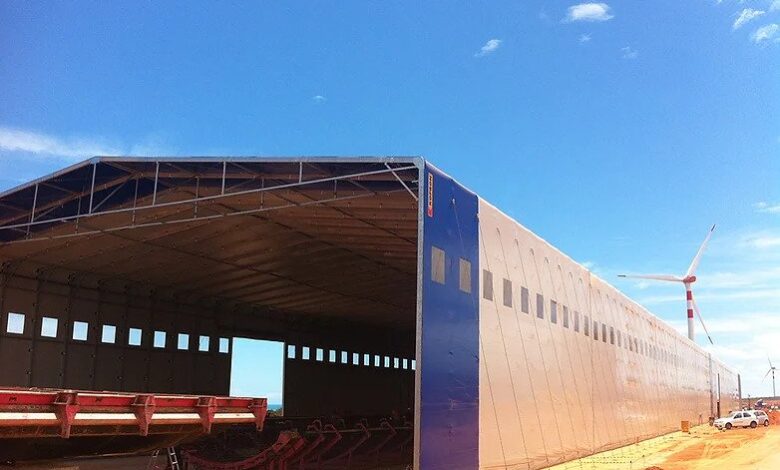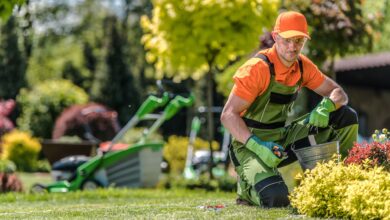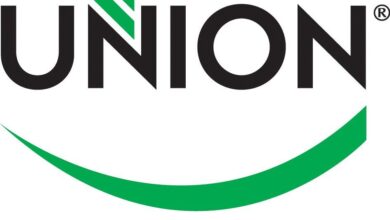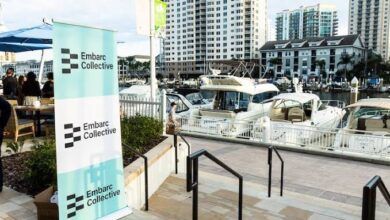Exploring the Versatility of Fabric Buildings

Fabric buildings, often referred to as tension fabric structures, are innovative architectural marvels. These versatile structures are gaining popularity across various industries, offering an array of benefits, including cost-effectiveness and sustainability.
Advantages of Fabric Buildings
Fabric buildings have gained traction due to their numerous advantages. These structures are lightweight, making them easy to transport and install. They offer remarkable energy efficiency, thanks to the translucent fabric that allows natural light to filter through. Additionally, fabric buildings are highly customizable, providing a solution for diverse needs.
The Versatility of Fabric Structures
One of the defining features of fabric buildings is their versatility. They find applications in diverse sectors, from agriculture and industry to the event and entertainment industry. Their adaptability allows for numerous configurations, catering to specific requirements.
Fabric Building Construction
Understanding the components and construction process of fabric buildings is crucial.
Components of Fabric Buildings
Fabric buildings typically consist of a robust frame made of galvanized steel or aluminum. This frame supports a tensioned fabric membrane, which can be customized in terms of color and branding.
Design and Engineering
The design and engineering of fabric buildings ensure structural integrity and load-bearing capabilities. This is a vital aspect, especially in regions with extreme weather conditions.
Installation Process
Fabric building installation involves securing the frame and tensioning the fabric membrane. The simplicity of this process significantly reduces construction time compared to traditional structures.
Applications of Fabric Buildings
Fabric structures have an extensive range of applications, making them indispensable in various sectors.
Agricultural Use
In agriculture, fabric buildings serve as cost-effective and versatile storage solutions for crops, machinery, and livestock. They also facilitate better ventilation and natural light.
Industrial and Commercial Applications
Industries and commercial enterprises utilize fabric buildings for warehousing, workshops, and even as alternative office spaces. The quick setup time and lower costs make them appealing.
Event and Entertainment Industry
Fabric buildings are favored for events due to their spacious and visually appealing interiors. These structures create memorable venues for concerts, exhibitions, and more.
Maintenance and Longevity
Proper maintenance ensures the longevity of fabric buildings.
Care and Maintenance Tips
Routine inspections and cleaning are essential to extend the life of fabric structures. Addressing minor issues promptly prevents costly repairs.
Lifespan of Fabric Buildings
Well-maintained fabric buildings can last for several decades, providing a reliable and long-term solution.
Sustainability
The sustainability of fabric buildings lies in their energy efficiency and recyclable materials. They have a smaller environmental footprint compared to traditional construction.
Customization and Design
The ability to tailor fabric buildings to specific needs and aesthetics is a remarkable feature.
Tailoring Fabric Buildings to Specific Needs
Clients can choose the size, shape, and features that align with their requirements.
Aesthetics and Branding Options
Custom branding and design choices enable businesses to create a unique and visually appealing structure that represents their brand.
Cost-Efficiency
Fabric buildings are known for their cost-efficiency.
Comparing Costs with Traditional Construction
The reduced construction time and materials make fabric buildings a cost-effective option.
Economic Benefits of Fabric Buildings
Businesses and organizations that invest in fabric structures often experience lower operating costs and quicker ROI.
Environmental Considerations
Fabric buildings are designed with the environment in mind.
Fabric Building Materials
The materials used are eco-friendly and can be recycled, contributing to a sustainable future.
Energy Efficiency
The translucent fabric allows natural light, reducing the need for artificial lighting, thus saving energy.
Eco-Friendly Aspects
The sustainability of fabric structures aligns with modern environmental concerns and regulations.
Fabric Buildings vs. Traditional Structures
A comparative analysis is essential for decision-making.
A Comparative Analysis
Comparing fabric buildings to traditional structures helps individuals and organizations make informed choices.
When to Choose Fabric Buildings
Understanding the scenarios in which fabric structures excel is key to choosing the right construction option.
Notable Manufacturers
Choosing a reputable manufacturer is crucial for quality and reliability.
Leading Fabric Building Companies
Highlighting well-known fabric building manufacturers renowned for their expertise and quality products.
Reputation and Product Quality
The reputation of a manufacturer reflects their commitment to customer satisfaction and product excellence.
Case Studies
Real-world examples showcase the practicality and success of fabric buildings.
Success Stories of Fabric Building Usage
Examining cases where fabric structures have provided solutions and contributed to success.
Real-World Examples
Providing real-life examples of fabric building applications.
Future Trends in Fabric Building Technology
Staying updated on emerging technologies is essential.
Innovations and Advancements
Exploring the latest innovations in fabric building technology and how they benefit users.
Emerging Technologies
New advancements that will shape the future of fabric buildings.
Regulations and Permits
Compliance with legal requirements is crucial.
Legal Requirements for Fabric Buildings
Understanding the regulations and permits necessary for fabric building construction.
Compliance and Safety Measures
Ensuring fabric buildings meet safety standards and regulatory requirements.
Challenges and Considerations
Recognizing potential challenges and addressing them is vital.
Weather and Environmental Challenges
The impact of weather and environmental conditions on fabric buildings and how to mitigate risks.
Durability Concerns
Addressing concerns related to the durability of fabric structures.
Customer Testimonials
First-hand experiences provide insights into customer satisfaction.
First-Hand Experiences
Gathering testimonials from fabric building users to share their experiences.
Customer Satisfaction Stories
Highlighting positive feedback and success stories.
Conclusion
In conclusion, fabric buildings offer a multitude of benefits, from cost-efficiency and sustainability to versatility and customization. They are becoming increasingly popular in various industries, promising a bright future for this innovative construction solution.
FAQs
Q1: Are fabric buildings as durable as traditional structures?
Fabric buildings, when properly maintained, can be highly durable and long-lasting. They are designed to withstand various weather conditions and can last for several decades.
Q2: How do fabric buildings compare in terms of cost to traditional construction?
Fabric buildings are generally more cost-effective than traditional construction due to reduced construction time and materials. They often lead to lower operating costs, providing a quicker return on investment.
Q3: Can fabric buildings be used for residential purposes?
While fabric buildings are primarily used for commercial, agricultural, and industrial purposes, they can also be adapted for temporary residential use, such as housing for disaster relief or remote work camps.
Q4: Are fabric buildings eco-friendly?
Yes, fabric buildings are eco-friendly. They use recyclable materials, allow natural light to reduce energy consumption, and have a smaller environmental footprint compared to traditional construction.
Q5: How customizable are fabric buildings?
Fabric buildings are highly customizable. Clients can choose the size, shape, color, and branding options to suit their specific needs and aesthetics.



